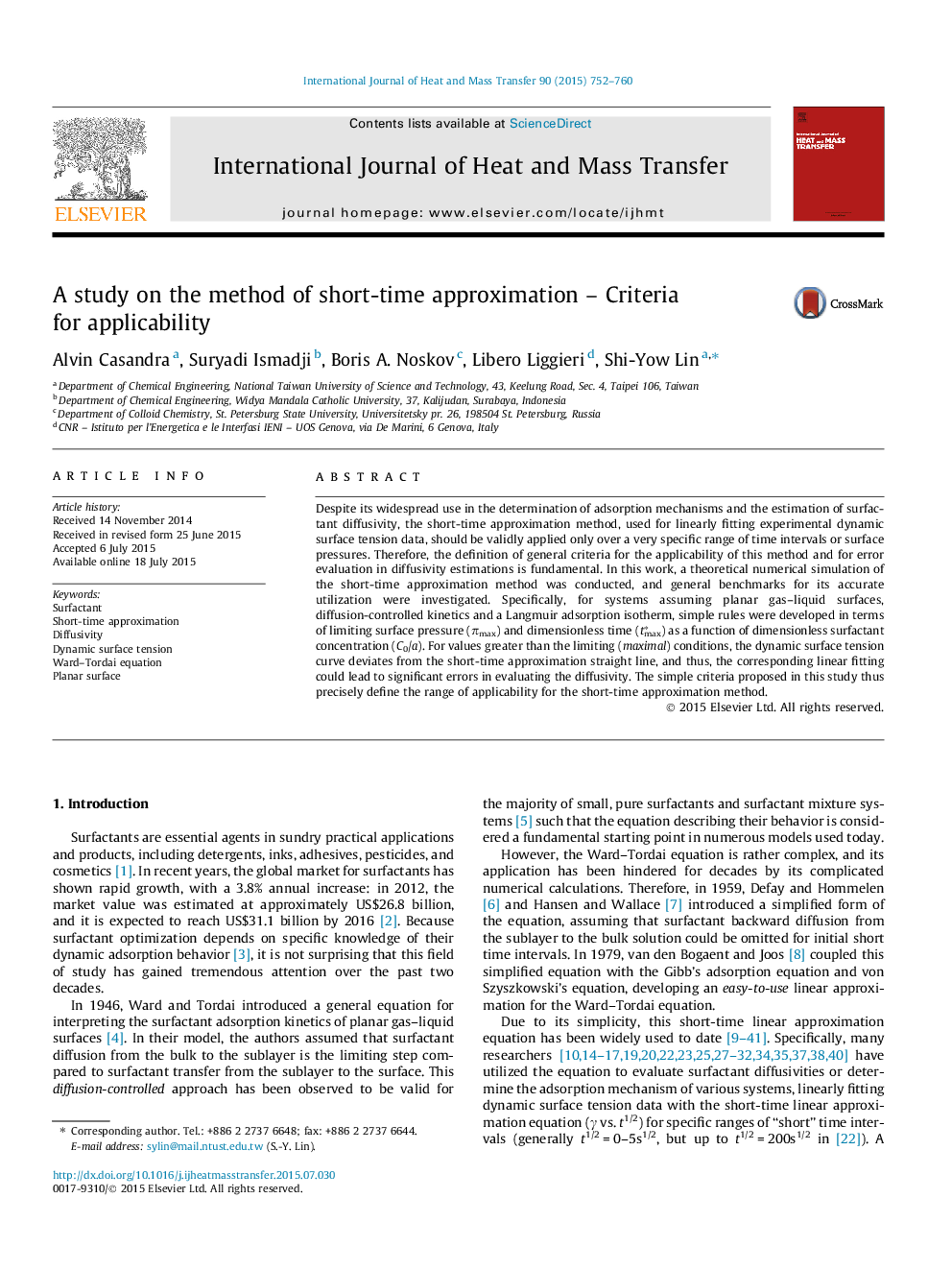| Article ID | Journal | Published Year | Pages | File Type |
|---|---|---|---|---|
| 7056534 | International Journal of Heat and Mass Transfer | 2015 | 9 Pages |
Abstract
Despite its widespread use in the determination of adsorption mechanisms and the estimation of surfactant diffusivity, the short-time approximation method, used for linearly fitting experimental dynamic surface tension data, should be validly applied only over a very specific range of time intervals or surface pressures. Therefore, the definition of general criteria for the applicability of this method and for error evaluation in diffusivity estimations is fundamental. In this work, a theoretical numerical simulation of the short-time approximation method was conducted, and general benchmarks for its accurate utilization were investigated. Specifically, for systems assuming planar gas-liquid surfaces, diffusion-controlled kinetics and a Langmuir adsorption isotherm, simple rules were developed in terms of limiting surface pressure (Ïmax) and dimensionless time (tâmax) as a function of dimensionless surfactant concentration (C0/a). For values greater than the limiting (maximal) conditions, the dynamic surface tension curve deviates from the short-time approximation straight line, and thus, the corresponding linear fitting could lead to significant errors in evaluating the diffusivity. The simple criteria proposed in this study thus precisely define the range of applicability for the short-time approximation method.
Related Topics
Physical Sciences and Engineering
Chemical Engineering
Fluid Flow and Transfer Processes
Authors
Alvin Casandra, Suryadi Ismadji, Boris A. Noskov, Libero Liggieri, Shi-Yow Lin,
